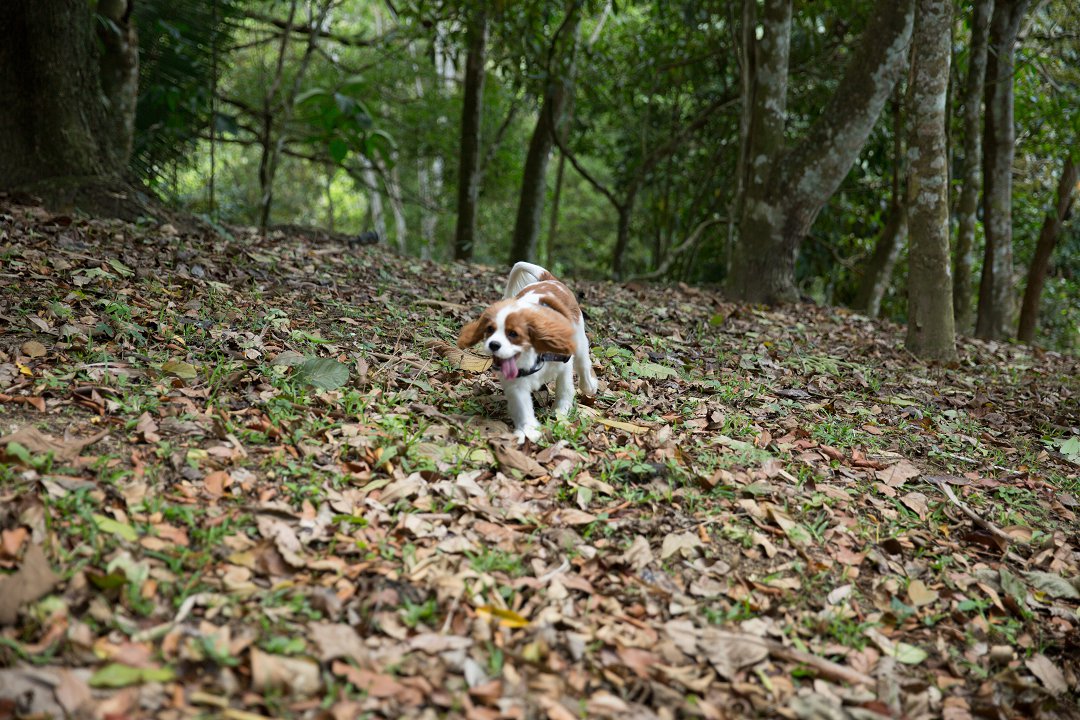Table of Contents
- 1 Introduction: The Importance of Potty Training for Beagle Dogs
- 2 Effective Techniques for Potty Training a Beagle Dog
- 3 Common Challenges and Solutions in Beagle Potty Training
- 4 FAQs About: How to Potty Train a Beagle Dog
- 4.1 1. Can I potty train my Beagle indoors using puppy pads?
- 4.2 2. How long does it take to potty train a Beagle?
- 4.3 3. Should I use crate training for potty training my Beagle?
- 4.4 4. How often should I take my Beagle puppy outside for potty breaks?
- 4.5 5. What should I do if my Beagle has accidents indoors?
- 4.6 6. My Beagle seems resistant to potty training. What can I do?
Introduction: The Importance of Potty Training for Beagle Dogs
Are you a proud owner of a beagle dog? If so, you might be wondering how to potty train your furry friend effectively. Potty training is an essential aspect of a beagle’s development, ensuring a clean and harmonious living environment for both you and your pet. In this article, we will explore the importance of potty training for beagle dogs and provide you with effective techniques to help you navigate this process successfully.
Potty training is crucial for beagle dogs as it helps them develop good habits and prevents accidents indoors. By teaching your beagle to eliminate waste in a designated area, you can avoid messy surprises around the house. Additionally, proper potty training promotes a healthy bond between you and your pet, as it establishes clear communication and mutual understanding.
In the next section, we will delve into effective techniques for potty training a beagle dog. From housebreaking methods to crate training, we will explore various approaches that have proven successful in teaching beagles proper toilet habits. So, let’s dive in and discover the best ways to potty train your beloved beagle companion!
Effective Techniques for Potty Training a Beagle Dog
Potty training is an essential aspect of owning a beagle dog. By teaching your furry friend where and when to relieve themselves, you can ensure a clean and comfortable living environment for both of you. Here are some effective techniques to help you successfully potty train your beagle dog:
1. Establish a Routine
Creating a consistent routine is crucial for potty training your beagle. Take your dog outside to the designated potty area at regular intervals throughout the day, such as after meals, naps, and playtime. This will help them understand when and where they should go.
2. Use Positive Reinforcement
Positive reinforcement is a powerful tool when it comes to potty training. Whenever your beagle successfully eliminates in the appropriate area, reward them with praise, treats, or a favorite toy. This will reinforce the desired behavior and motivate them to continue using the designated spot.
3. Supervise and Confine
During the initial stages of potty training, it’s important to supervise your beagle closely. Keep them within eyesight to prevent accidents and be ready to redirect them to the designated potty area if needed. You can also confine them to a small, puppy-proofed area when you cannot supervise them, such as a crate or a gated section of the house.
4. Use a Command
Teaching your beagle a specific command for eliminating can be helpful in the long run. Choose a simple phrase like “go potty” or “do your business” and use it consistently every time you take them to the designated area. Eventually, they will associate the command with the action and understand what is expected of them.
5. Clean Accidents Properly
Accidents are bound to happen during the potty training process. When they do occur, it’s important to clean them up properly to eliminate any lingering odors that may attract your beagle back to the same spot. Use an enzymatic cleaner specifically designed for pet messes to thoroughly remove the scent.
By implementing these effective techniques, you can successfully potty train your beagle dog. Remember to be patient and consistent throughout the process. With time and dedication, your beagle will learn how to relieve themselves in the appropriate area. In the next section, we will discuss common challenges that may arise during beagle potty training and their solutions. Stay tuned to learn how to overcome these hurdles and ensure a successful potty training journey for your furry friend.
Common Challenges and Solutions in Beagle Potty Training
Potty training a beagle dog can be a challenging task, as they are known to be stubborn and independent. However, with patience, consistency, and the right techniques, you can successfully train your beagle to use the designated potty area. In this section, we will discuss some common challenges that you may encounter during the potty training process and provide effective solutions to overcome them.
1. Accidents in the House
Beagles, especially puppies, may have accidents in the house during the potty training phase. This can be frustrating, but it’s important to remember that accidents are a normal part of the learning process. Here are some solutions to address this challenge:
- Supervise your beagle at all times: Keep a close eye on your beagle, especially when they are not confined to their designated potty area. This will allow you to catch them in the act and redirect them to the appropriate spot.
- Establish a consistent routine: Create a schedule for feeding, playtime, and potty breaks. By following a routine, you can predict when your beagle is likely to need to go outside and prevent accidents.
- Use positive reinforcement: When your beagle successfully eliminates in the designated potty area, reward them with praise, treats, or playtime. Positive reinforcement will help them understand that going potty in the right place is a desirable behavior.
2. Resistance to Crate Training
Crate training is an effective method for potty training beagle dogs, as it teaches them to hold their bladder and bowels. However, some beagles may resist being confined to a crate. Here are some solutions to overcome this challenge:
- Gradual introduction: Introduce the crate gradually by making it a positive and comfortable space for your beagle. Place treats, toys, and a cozy bed inside the crate to make it inviting.
- Short duration confinement: Start with short periods of crate confinement and gradually increase the duration. This will help your beagle become more comfortable with being in the crate.
- Positive association: Associate the crate with positive experiences by feeding your beagle their meals inside the crate or giving them special treats when they willingly enter the crate.
3. Marking Behavior
Beagles, particularly male dogs, have a tendency to mark their territory by urinating on vertical surfaces. This can be a challenge during potty training. Here are some solutions to address this behavior:
- Neuter or spay your beagle: This can help reduce marking behavior, as it decreases the hormone levels that drive the urge to mark.
- Consistent supervision and redirection: Keep a close eye on your beagle and redirect them to their designated potty area whenever they show signs of marking behavior. Use positive reinforcement when they eliminate in the right spot.
- Clean and eliminate scent: Thoroughly clean any areas where your beagle has marked with an enzymatic cleaner to remove the scent. This will help prevent them from returning to the same spot.
By being aware of these common challenges and implementing the appropriate solutions, you can effectively potty train your beagle dog. Remember to be patient, consistent, and use positive reinforcement to encourage desired behaviors. With time and effort, your beagle will become a well-trained and housebroken companion.
FAQs About: How to Potty Train a Beagle Dog
1. Can I potty train my Beagle indoors using puppy pads?
Potty training a Beagle indoors using puppy pads is possible, but it’s important to transition them to outdoor potty training eventually. Start by using puppy pads in a designated area indoors and gradually move the pads closer to the door. Once your Beagle consistently uses the pads, start taking them outside to the desired potty spot.
2. How long does it take to potty train a Beagle?
The time it takes to potty train a Beagle can vary depending on the individual dog and consistency of training. On average, it can take anywhere from a few weeks to a few months. Patience, consistency, and positive reinforcement are key to successful potty training.
3. Should I use crate training for potty training my Beagle?
Crate training can be an effective method for potty training a Beagle. Dogs naturally avoid soiling their sleeping area, so using a crate can help teach them to hold their bladder and bowels. However, it’s important to provide regular potty breaks and never use the crate as a punishment.
4. How often should I take my Beagle puppy outside for potty breaks?
Beagle puppies have small bladders and need frequent potty breaks. Aim to take your puppy outside every 1-2 hours, as well as after meals, playtime, and naps. Establishing a consistent routine will help them learn to associate outdoor trips with potty time.
5. What should I do if my Beagle has accidents indoors?
Accidents are a normal part of the potty training process. When you catch your Beagle in the act, calmly interrupt them and take them outside to their designated potty spot. Avoid scolding or punishing them, as this can create fear and hinder their progress. Clean up accidents with an enzymatic cleaner to remove any lingering scent.
6. My Beagle seems resistant to potty training. What can I do?
If your Beagle is struggling with potty training, reassess your training methods and consistency. Ensure you’re providing ample opportunities for them to go outside, using positive reinforcement such as treats and praise when they eliminate in the right spot, and being patient with their progress. If the challenges persist, consider seeking guidance from a professional dog trainer.






Leave a Reply